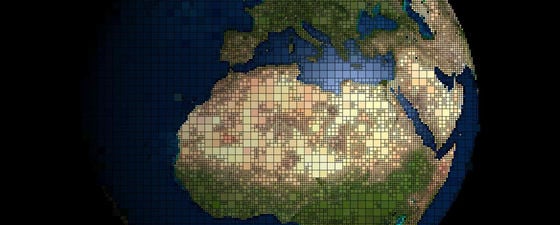Worldwide exploration performance: how successful has 2018 been so far?
Oil and Gas Exploration Success in 2018
Worldwide exploration performance.
Exploration success is spread far and wide in mid-2018, against a backdrop of low wildcat well counts and mediocre success for some high profile campaigns. Success there certainly has been, however, with major reserves being added by a number of companies, from ‘superminors’ like Savannnah, Parex, Quadrant and Carnarvon, to the supermajors. With recent industry debate echoing ‘peak oil’ premonitions of the ’90s, the current mood amongst the hydrocarbon eschatologists is set starkly against the inescapable trend of rising demand for oil, the local market imperative for cheap energy, and the inexorable rise of gas in the energy mix. Organic conventional reserves additions at the drill bit is therefore a welcome trend, with discoveries being notched up in Africa, South America, Asia and Australia, amongst other places.
Hydrocarbon Exploration Activity Across the South Atlantic
In Niger AIM-listed junior Savannah Petroleum has racked up three oil discoveries on the southern edge of the Agadem Graben, with between two and five more prospects to test.
The discovery map is still predominantly littoral, however. Offshore Gabon Petronas, Woodside and Repsol have been successful in opening up the Lower Cretaceous/Barremian pre-salt clastic play, a major new trend with equal measures of challenges and rewards. Further south in Angola, Total has kick-started the first of two Kaombo FPSO developments in ultra-deepwater Block 32, which is bound to pave the way for a number of previously isolated tie-back developments in the distal Lower Congo Basin.
Across the Atlantic in similar aged rocks, the Brazilian sector is benefiting from numerous wells and developments. Equinor’s Guanxuma 1 in the Santos Basin (with ExxonMobil, Galp and Barra) may contribute over 500 MMbo to its inventory.
The Upper Cretaceous still holds fascination, with high quality marine clastics providing reasonable results on the South American eastern seaboard, although the same play in the African Transform Margin failed. ExxonMobil (with Hess and CNOOC) are chasing their seventh discovery with Hammerhead, having proved up over 4 Bbo on the Starbroek block in Guyana.
Colombia continues to see high levels of activity, with almost 30 wells being drilled so far in 2018 in the Llanos and Magdalenas Basins by the likes of Geopark, Parex, Frontera and of course Ecopetrol. Likewise Trinidad and Tobago continues a long tradition of exploration and development, with BHP and Shell testing Victoria 1, while BP moves the Angelin FPSO into place.
Supermajors like Shell, Total, ExxonMobil and Equinor are teaming with YPF in the Neuquen Basin’s Vaca Muerta Shale in world-class gas developments in what is by far the largest unconventional play outside North America.
Mexico will be under scrutiny in the next few months as the new political leaders get established, but there is certainly a great deal of early success plus committed drilling to keep this area in the spotlight.
Ready to Drill Prospects
Notwithstanding the low oil price inertia, several important wells are sanctioned and ready to deliver, including offshore Portugal, where Eni and Galp are targeting the Jurassic Santola prospect, with close analogies to the eastern Canadian Lower Mesozoic play.
Brazil will host Premier’s attempts to develop the Cretaceous rift basin play around Pecem, with a dual-target well to test the Maraca and Berimbau prospects in the Ceara Basin, while Shell and Total plan a well in Q1 2019 in the Gato de Mato block. This is one of many high impact pre-salt wells planned after the hugely successful 2018 pre-salt bid round organized by ANP.
Offshore Namibia and South Africa will also host important wildcats. In the Walvis Basin, Tullow and Chariot Oil & Gas will drill Cormorant and Prospect S respectively. The Orange Basin Namibia will be tested in earnest with Shell targeting isolated reefal targets (Cullinan) and Total choosing to test major deep marine fans in water depths of over 2,500m. Total will also revisit its Bulpradda prospect in the Padavissie fan system in South Africa this year, while Eni and Sasol have up to five wells planned in their deepwater Durban Basin block.
Written by Peter Elliot; Nventures.
These hydrocarbon hotspot features are brought to you in association with NVentures.





